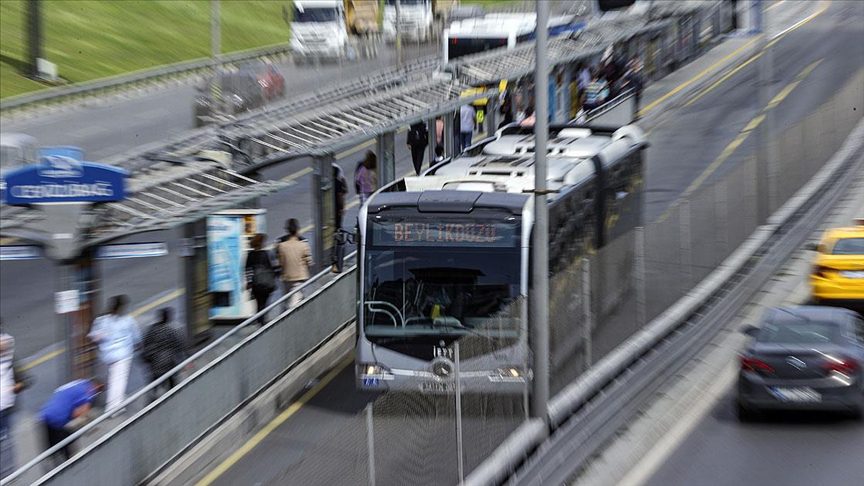As mass transit usage drops and more people decide to drive due to the pandemic’s lingering fears, Istanbul continues to face increased traffic congestion.
Getting into a crowded bus in Istanbul was naturally not an option for transportation for millions seeking to avoid coronavirus infections, which have gripped the country since early 2020.
Restrictions on passenger capacity due to the pandemic caused a further decline in mass transit ridership. Although restrictions on overcrowded buses have been eased, the fear of infection is still prominent in the minds of Istanbulites, and for those that can afford a private vehicle, all the more reason to avoid public transportation. Thus, the city, the most crowded of Turkey with a population of more than 15 million people, is faced with worsening traffic day by day.
Figures from Istanbul Metropolitan Municipality (IBB) show the number of mass transit passengers was 1.1 billion in the first six months of 2019, long before the pandemic made its foray into Turkey. This number dropped 40% in the first six months of 2020, when the number of cases was significantly high. Turkey managed to decrease the daily case numbers from more than 50,000 to below 10,000 by the end of this spring. However, figures for the first six months of 2021 show the number of mass transit passengers decreased more, by 14%, receding to 562.1 million. Overall, mass transit ridership is barely half of what it was compared to 2019.
Mass transit in the city covers everything from buses to trams, metro lines and ferries. According to IBB figures, the sharpest drop in passenger numbers was in January. Compared to January 2020, mass transit passengers dropped by 61% in January 2021. Even the ferries carrying passengers between the two sides of the Bosporus also saw their numbers drop despite the fact that they offer a shorter journey between the two continents compared to a bus and despite the fact they offer better social distancing options.
Professor Mustafa Ilıcalı, director of the Center for Application and Research for Transportation Systems at Istanbul Ticaret University, says the city usually had some 8 million passengers utilizing mass transit daily, but this number fell below 1 million after the pandemic emerged. Though it is behind other cities across the country nowadays, Istanbul had long been a hot spot of COVID-19 clusters in the early days of the pandemic. The first cases were reported in the city, which now has around 156 cases per every 100,000 residents, far lower than Rize, the northern province with the highest number of cases with 653 per 100,000 people.
Since the start of the pandemic, mass transit vehicles have long operated with limited capacity and earlier this year, the municipality started asking for Life Fits Into Home (HES) code from passengers to ensure they are not infected. Ilıcalı says restrictions alone were not the reason to avoid mass transit and points out a study his center conducted.
“The average number of people who took to driving rather than using mass transit increased to 350,000 daily. People who once shunned their own vehicles so that they would not be stuck in traffic returned to driving. People who do not own cars started resorting to rental cars,” he told Anadolu Agency (AA) on Tuesday.
Turkey has seemingly left the worst behind in the pandemic, though the number of daily cases has climbed up above 20,000 recently. The country had lifted almost all restrictions in July after a strict 17-day lockdown and in light of its expanding vaccination program. With the exception of continuing mandatory masks and social distancing rules, life has returned to normal for many.
This return to pre-pandemic days also means a return to Istanbul’s high traffic levels. It was evident when schools reopened for in-person education on Sept. 6. Ilıcalı says the traffic will be further aggravated when universities open later this month and in October.

